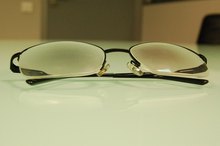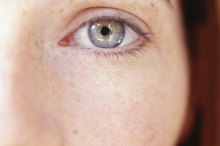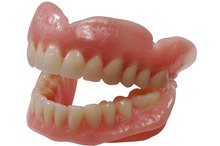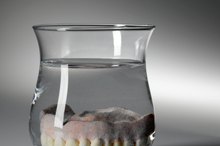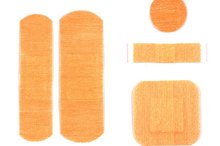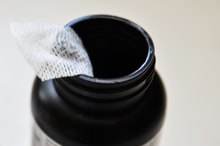How to Restore the Sun-Damaged Plastic on a Motorcycle
Much of a motorcycle’s outer covering or fairings are made from high-strength plastic or fiberglass-reinforced resin. While the majority of these plastics are designed to repel the sun’s damaging ultraviolet rays, the sun can still cause fading over time and, in some extreme cases, micro-cracking on the plastic’s surface. Replacement parts can be expensive and hard to find. Use a few basic plastic restoration products to repair, rather than replace, sun-damaged plastic motorcycle parts.
Wash the damaged plastic thoroughly, using concentrated liquid laundry detergent. Use 3 tsp. detergent to 16 oz. hot water. Plastic buffing compounds, conditioners and polishes require a grease-free surface to work properly. Plastic motorcycle parts are exposed to grease from the engine, as well as dirt and debris from the road. Therefore, a complete cleaning is absolutely necessary. Wipe the surface of the plastic down with a 100 percent cotton cloth and allow the surface to dry before proceeding.
How to Repair a Scratch on Transition Eyeglass Lenses
Learn More
Examine the plastic surfaces to determine what type of damage has occurred. The majority of sun-related damage comes in the form of fading, yellowing or fogging. Fogged plastic will have a hazy look that leaves the plastic's finish cloudy and unclear. Use painter’s masking tape to create a 2-inch border around the damaged areas.
Apply plastic conditioner to the damaged area using a 100 percent cotton rag. Many plastic conditioners are designed to neutralize yellowing or fading, restoring the plastic to its original color. Work the conditioner into the surface of the plastic, moving the cotton rag in a circular motion. After following any special manufacturer’s instructions regarding the conditioner, allow it to dry for at least two hours. Reexamine the damaged surfaces for fogging and micro cracks.
How to Get Rid of Scars From Belly Piercings
Learn More
Apply a plastic polish to the reconditioned surface (the area you just conditioned). Apply the polish with a 100 percent cotton rag. If there are any noticeable scratches visible after polishing, proceed to the next step. If there are no scratches, remove the masking tape — the project is complete.
Apply a plastic buffing compound to a 100 percent cotton rag. Plastic buffing compounds come in two strengths: one for deep scratches and one for light scratches. Micro cracks from sun damage are repaired with a light scratch remover. Buff the scratches out, using a circular motion rather than moving the rag back and forth parallel with the scratch. This avoids creating a depression or indentation on the surface being buffed. Once the scratches are removed, wipe the area down with a clean cotton rag. The buffed area doesn't have to be reconditioned before proceeding.
Apply plastic polish by lightly spraying the surface with enough polish to leave a thin coating across the damaged area. Most plastic polishes come in a spray bottle. If the polish doesn't have a spray top, use 1 to 2 tsp. of polish per square foot of damaged area. Rub the polish in until a glossy and uniform finish is achieved. Wipe the damaged area down one last time to complete the project.
Tips
Many plastic conditioner manufacturers offer products that contain a sun blocker formulated for plastics. This sun blocker is similar in concept to sun blockers used for human skin. Apply a coating onto all the motorcycle’s plastic parts to extend their life.
Warnings
If a plastic part is severely damaged and that part is key to the rider's safety, it's better to replace it. Safety comes first.
Related Articles
References
Tips
- Many plastic conditioner manufacturers offer products that contain a sun blocker formulated for plastics. This sun blocker is similar in concept to sun blockers used for human skin. Apply a coating onto all the motorcycle's plastic parts to extend their life.
Warnings
- If a plastic part is severely damaged and that part is key to the rider's safety, it's better to replace it. Safety comes first.
Writer Bio
Hugh Patterson started writing poetry in 1978. He started writing fiction and non fiction in 2003. His work has appeared in "The Nervous Breakdown" magazine and a number of other literary journals. He also writes online book reviews. He studied chemistry and design at Ventura College and had a California Math and Science Teacher's Fellowship through the University of California Santa Barbara.
